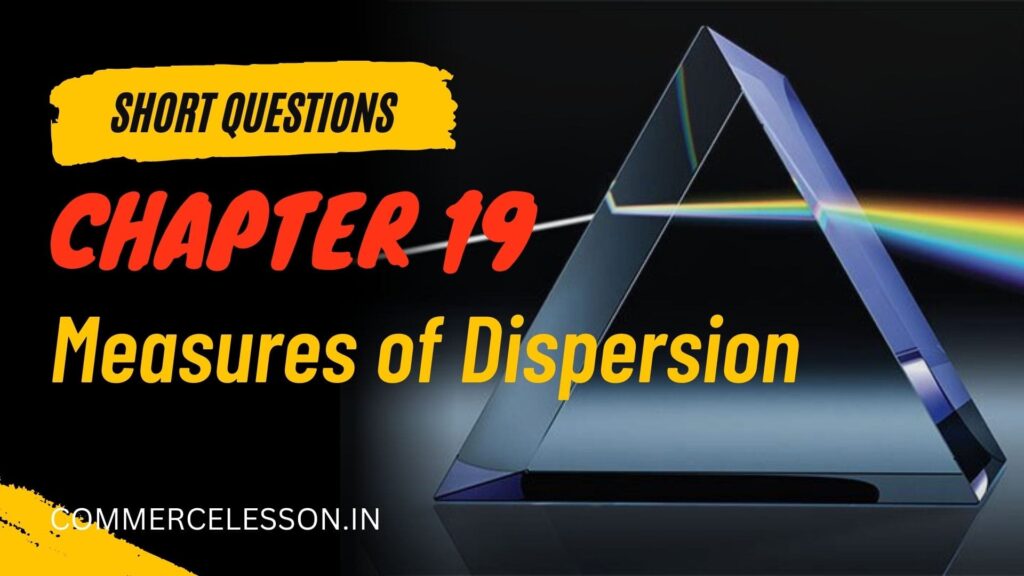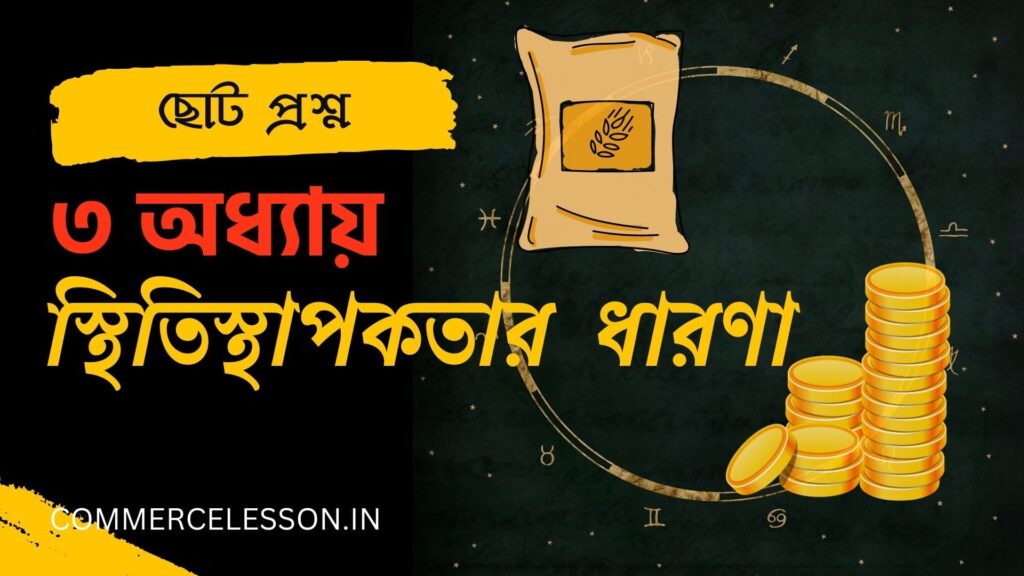Chapter 21 : Economic Reforms in Banking, Insurance and International Trade | Short Questions [2 Marks each]
1. Mention two recommendations of Narasimham Committee. [2015]
Or, Mention any two recommendations of Narasimham Committee for reform of the Indian banking sector. [2018]
Answer: Two recommendations of the Narasimham Committee are-
(i) the statutory liquidity ratio (SLR) should be reduced from 38.5% to 25% over a period of five years.
(ii) the cash reserve ratio (CRR) should be progressively reduced.
2. According to Narasimham Committee there are two factors responsible for the low profitability of public sector banks. Mention these two factors.
Answer: According to Narasimham Committee there are two factors responsible for the low profitability of public sector banks are directed investment and directed credit programmes.
3. What was the recommendation of Narasimham Committee on rates of interest.
Answer: The Narasimham committee recommended that SLR should be reduced from 38.5% to 25% which will enable the banks to give more loans to the private sector at high-interest rates and result in an increase in the profitability of the banks.
4. What was the reccomendation of Narasimham Committee regarding bad and doubtful assets of banks?
Answer: The Narasimham Committee recommended setting up an ‘Assets Reconstruction fund’. It will take over from the nationalised banks a portion of their bad and doubtful debts at a discount. This will help the banks to take off bad and doubtful debts from their balance sheets.
5. Mention two measures adopted in accordance with the recommendations of the Narasimham Committee.
Answer: Two measures adopted in accordance with the recommendations of the Narasimham Committee are:
(a) The SLR has been reduced to the recommended level of 25%.
(b) The CRR has been reduced to 10%.
6. Why is general insurance called contract of indemnity. [2017]
Answer: In case of general insurance, compensation is paid only if the loss takes place due to any of events mentioned in the policy document. For this reason, general insurance is called a contract of indemnity.
7. Why is life insurance called contract of assurance? [2016, 2018]
Answer: Life insurance is called a contract of assurance because in the case of life insurance the insurer gives the assurance of payment of a certain sum of money either to the insured or to the legal heir or to the nominee of the insured.
8. In which year was the LICI set up?
Answer: In the year 1956, The Life Insurance Corporation of India (LICI) was set up.
9. In which year was the GICI set up?
Answer: In the year 1972, The General Insurance Corporation of India (GICI) was set up.
10. What is the difference between life insurance and general insurance? [2015]
Answer:
| Life Insurance | General Insurance |
|---|---|
| 1. Life Insurance is a contract of assurance. | 1. General Insurance is a contract of indemnity. |
11. State two recommendations of Malhotra Committee on insurance sector reforms.
Or, Mention any two recommendations of the Malhotra Committee for reforms in India’s insurance sector. [2017]
Or, State any two recommendations of Malhotra Committee in 1993. [2022]
Answer: Two recommendations of the Malhotra Committee in 1993 are:
(a) The monopoly of the insurance sector should be abolished.
(b) The four subsidiaries of GICI should be organised as separate independent companies.
12. State two measures for the reform of the insurance sector in India.
Or, Mention two measures adopted for introducing reforms in the insurance sector in India.
Answer: Two measures adopted by the government of India for the reform of the insurance sector in India are:
(i) In December 2000, the four subsidiaries of GICI have been organised as independent companies.
(ii) The government of India established the Insurance Regulatory Authority under the ministry of finance in 1995.
13. Which institution is empowered to control insurance companies in India?
Answer: Insurance Regulatory and Development Authority (IRDA) is empowered to control insurance companies in India.
14. State any two functions of Insurance Regulatory and Development Authority (1999). [2019]
Answer: Two functions of the Insurance Regulatory and Development Authority (IRDA) are:
(a) IRDA regulates the functioning of insurance companies operating in the insurance sector and protects the interests of the policyholders.
(b) Without the permission of IRDA no insurance company can start an insurance business in India.
15. What do you mean by liberalisation of foreign trade? [2016, 2018]
Answer: Liberalisation of foreign trade refers to a reduction in the control of exports and imports, free exchange of capital, labour, service etc.
16. Mention two measures adopted for liberalisation of foreign trade in India.
Answer: Two measures adopted for liberalisation of foreign trade in India are:
(a) exchange rate mechanism and convertibility of the Indian rupee.
(b) liberalisation of imports.
17. What is meant by current account convertability of Indian rupee? [2019]
Answer: Current account convertibility of Indian rupee refers to the system where all exporters and other foreign exchange earners will be allowed to convert 100 percent of their earnings at market rates and importers will have to pay at market rates that are determined by the forces of demand and supply.
18. Mention two demerits of import liberalization in India. [2022]
Answer: Two demerits of import liberalization in India are:
(a) Adverse effect on domestic industries.
(b) Increase in unemployment.
19. State two advantages of liberalisation of foreign trade in India.
Or, State two benefits of trade liberalization in India. [2022]
Answer: Two advantages of liberalisation of foreign trade in India are:
(a) the volume of foreign exchange reserves has increased.
(b) as a result of flexible exchange rates, exporters are increasing their exports.
20. What is the main difference between WTO and GATT? [2022]
Answer:
| GATT | WTO |
|---|---|
| 1. GATT was only an agreement. | 1. WTO is established as an organisation. |
| 2. GATT had no legal status. | 2. WTO has a legal status. |
21. Mention two functions of World Trade Organisation. [2015]
Or,State two major functions of WTO. [2022]
Answer: Two major functions of WTO are:
(a) WTO will try to execute the conditions contained in the WTO agreement and to promote multilateral trade agreements.
(b) WTO will function as a forum of discussion among the member countries.
22. Mention two benefits that India gets after joining the WTO.
Or, Mention two advantages which India enjoys as a member of World Trade Organisation. [2016]
Or, Mention two advantages of India as a member of World Trade Organisation. [2018]
Answer: Two benefits that India gets after joining the WTO are:
(a) Exports of agro-based industrial goods in India are likely to increase.
(b) If the export and import of services are liberalised in India, India can export labour services.
23. Mention two disadvantages that India faces after joining the WTO.
Or, Mention two disadvantages India suffers from as a member of the World Trade Organisation. [2017]
Or, State two disadvantages India suffers as a result of establishment of World Trade Organisation. [2019]
Answer: Two disadvantages India suffers as a result of establishment of the World Trade Organisation are:
(a) In the new system, India will have to change the patent law drastically.
(b) According to agreement of TRIMs, there should not be any discrimination between foreign and domestic investments.
24. Mention two demerits of globalization in India. [2022]
Answer: Two demerits of globalization in India are:
(a) As a result of globalization, India’s employment will not rise.
(b) After 1991, foreign exchange reserves in India increased as a result of foreign loans which leads India towards a debt trap.
Like our post?
We are available with lots and lots of commerce-related content.





[…] Economic Reforms in Banking, Insurance and International Trade | Short Questions | Economics | WBCH… […]